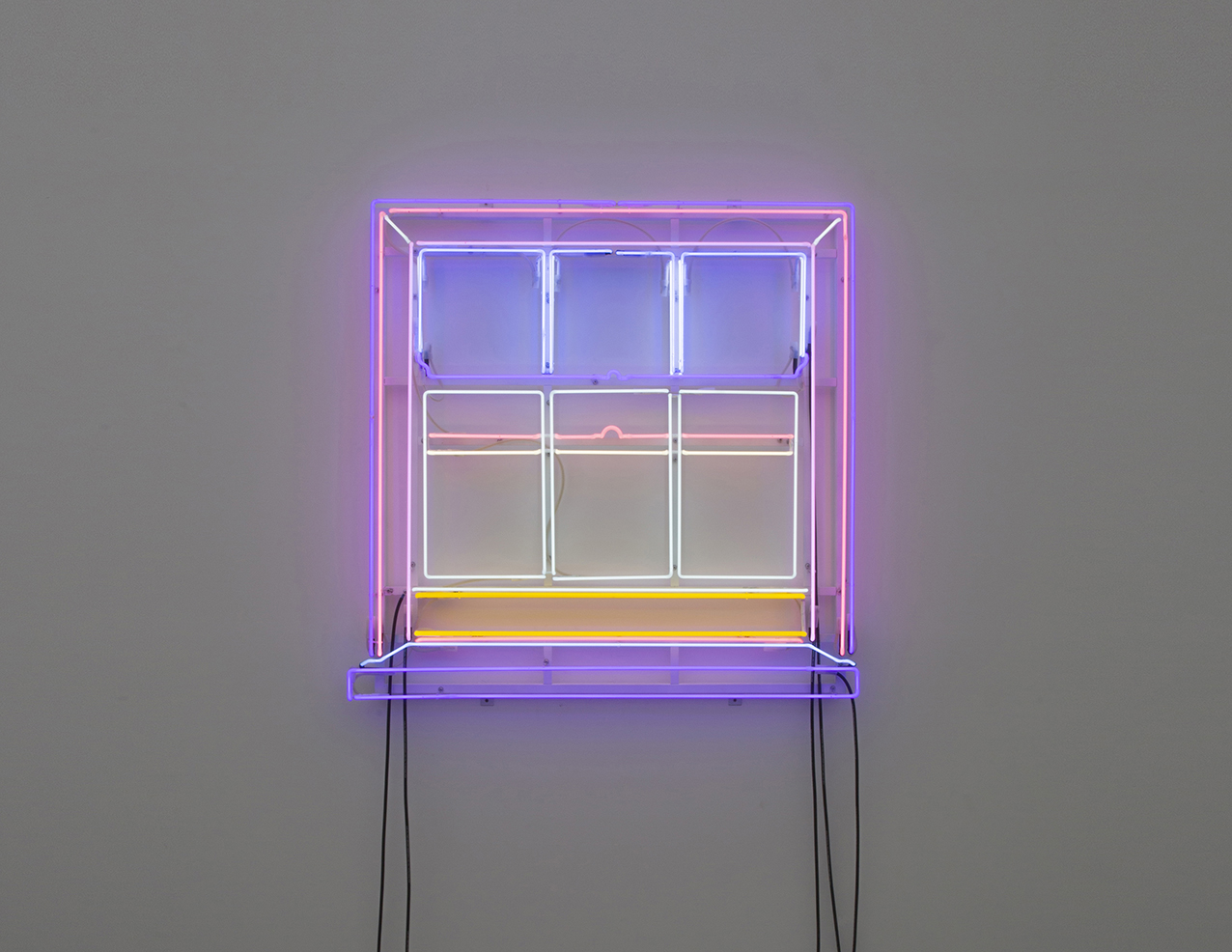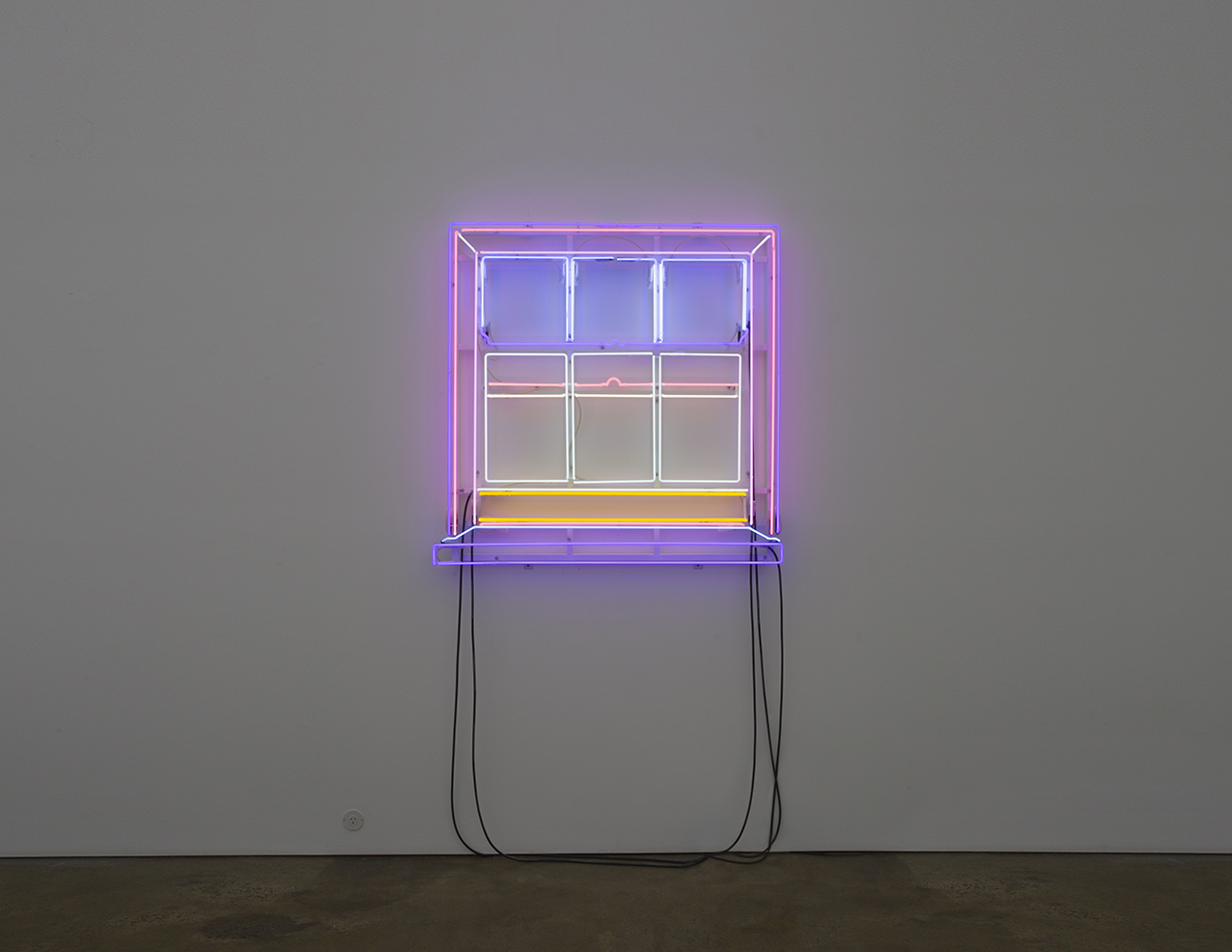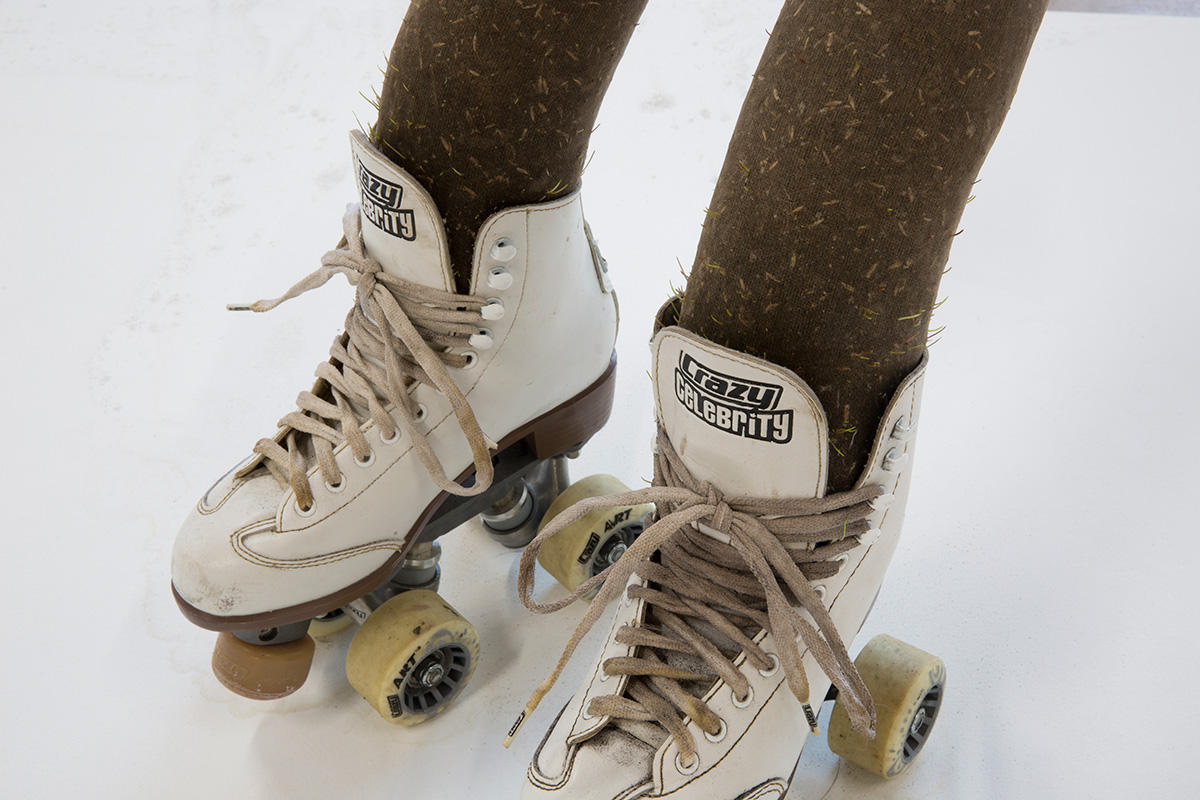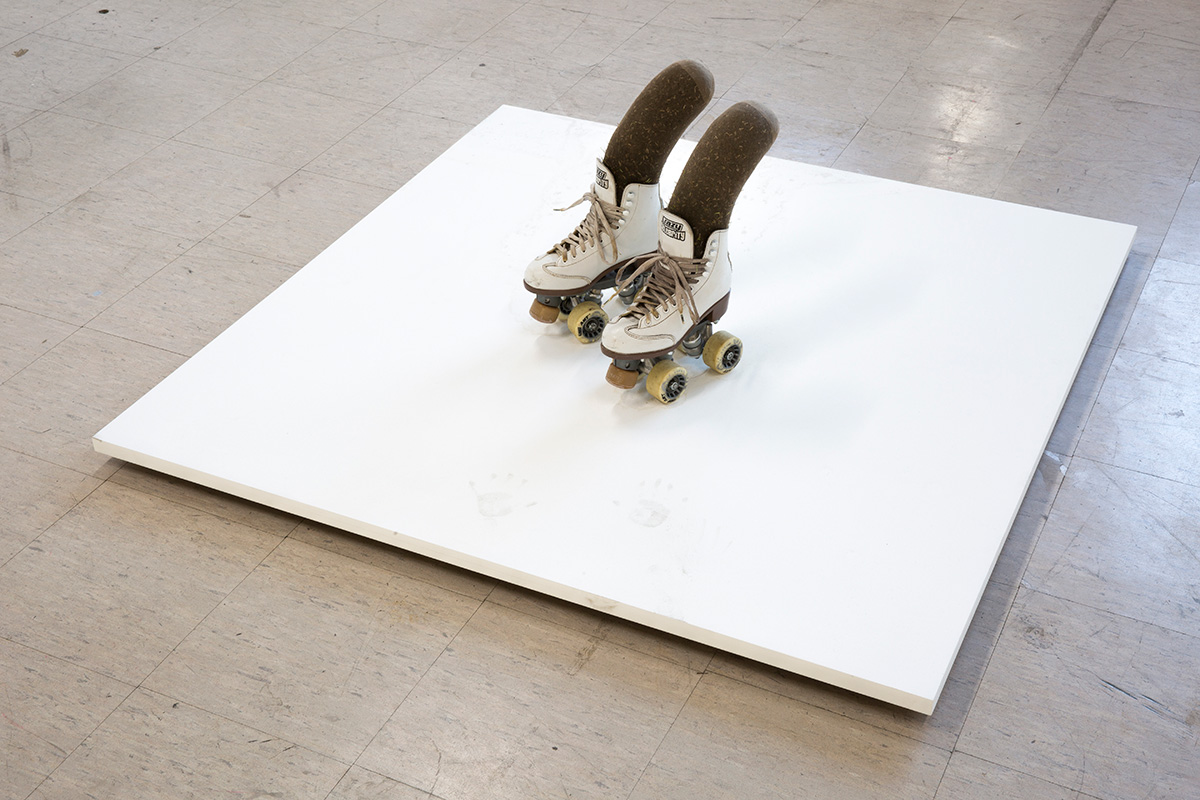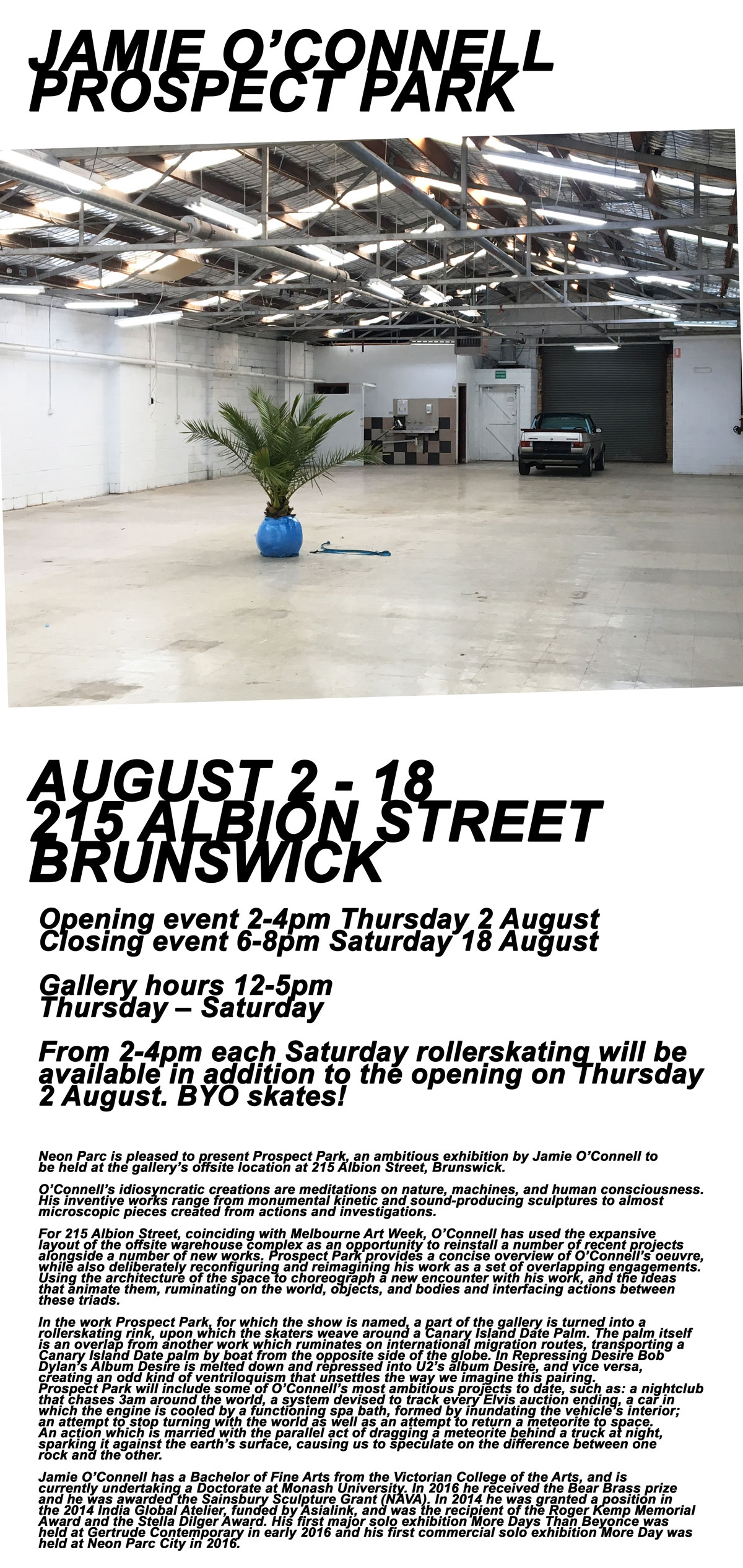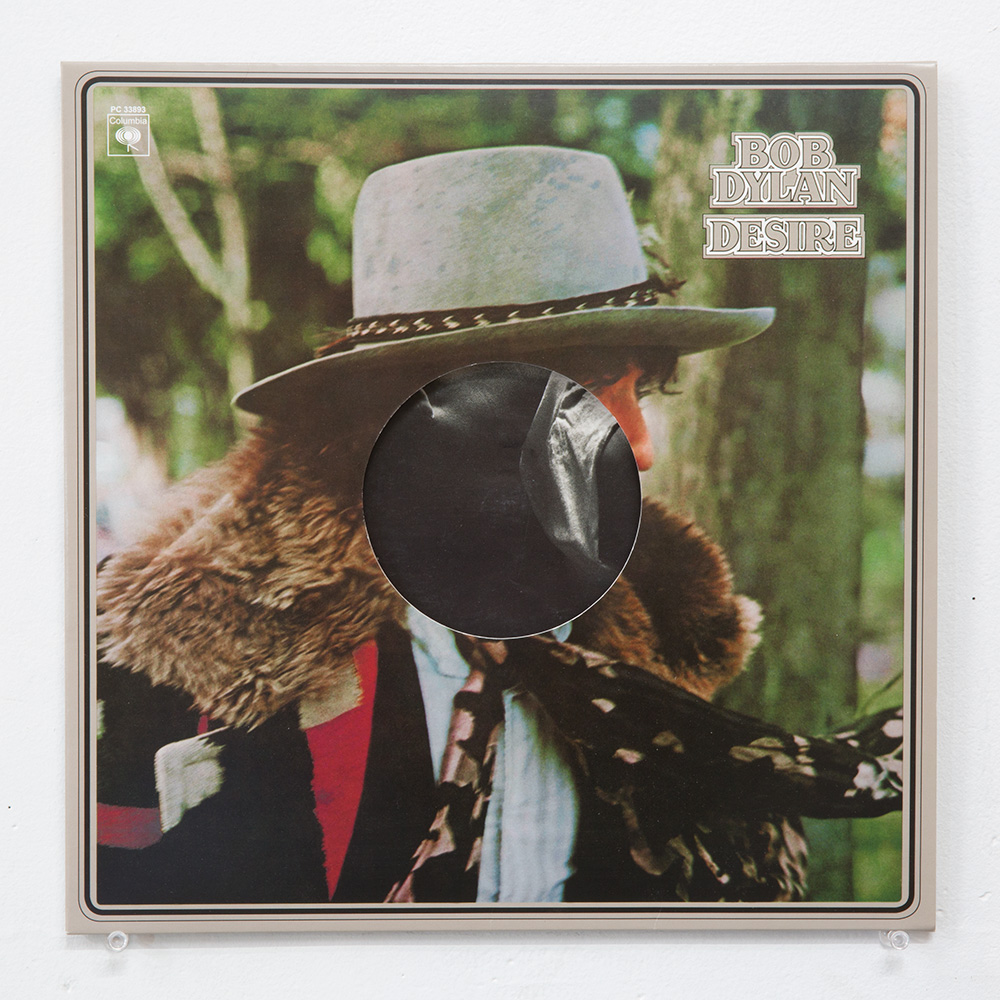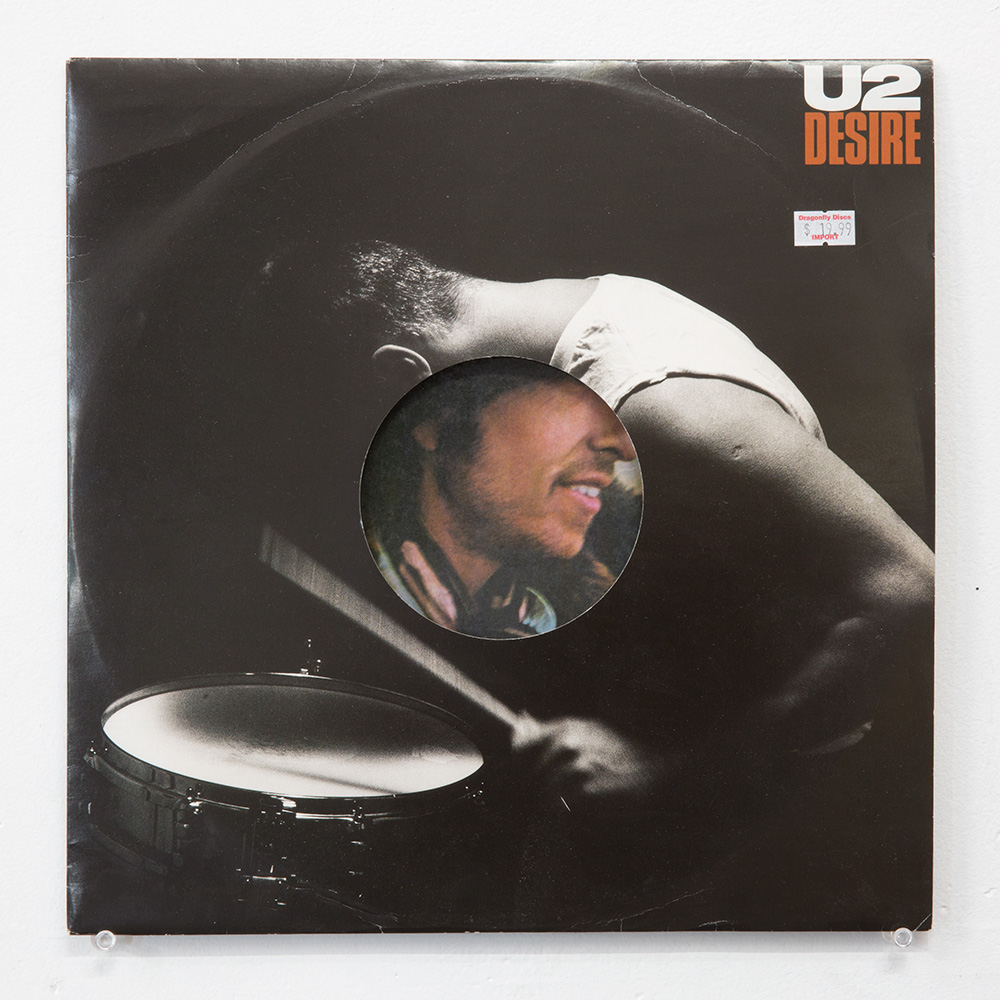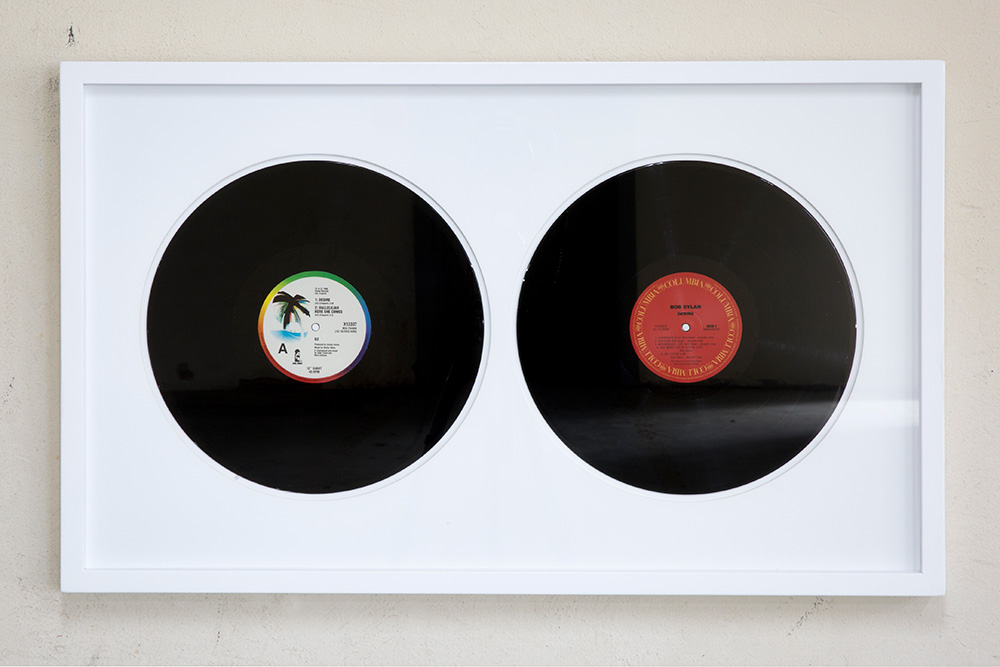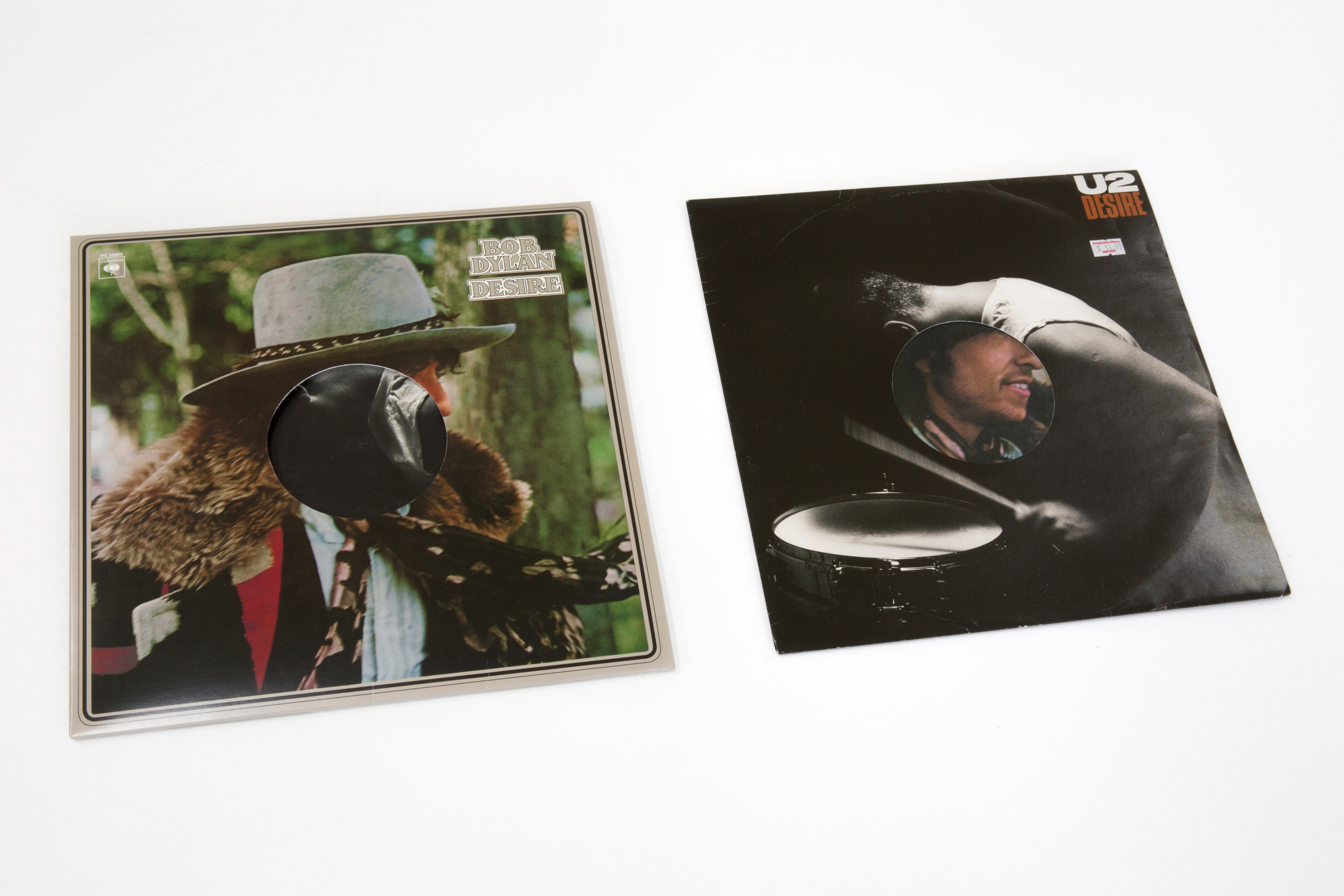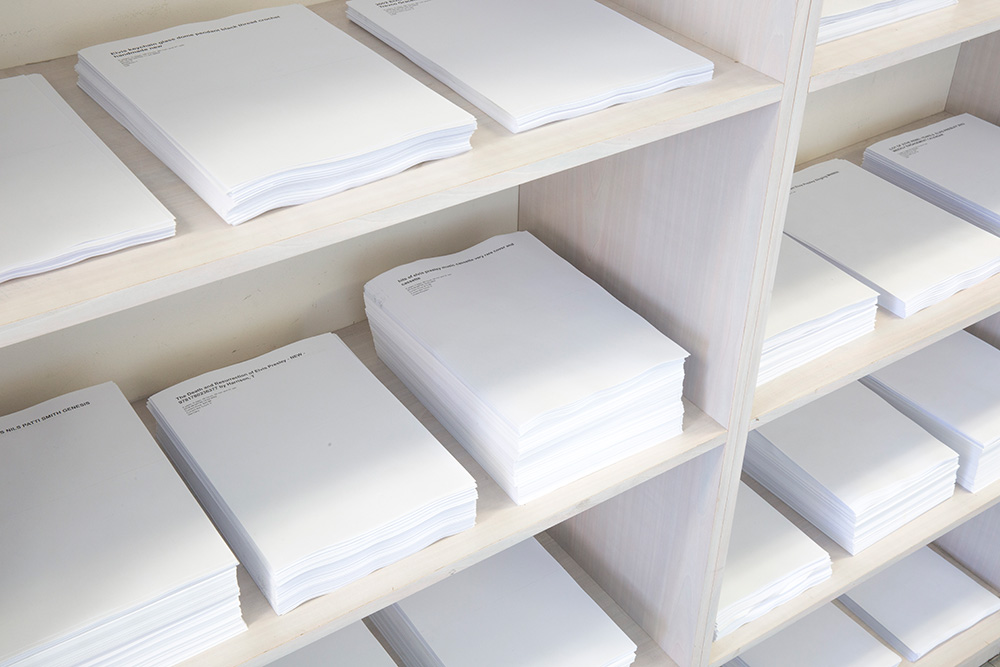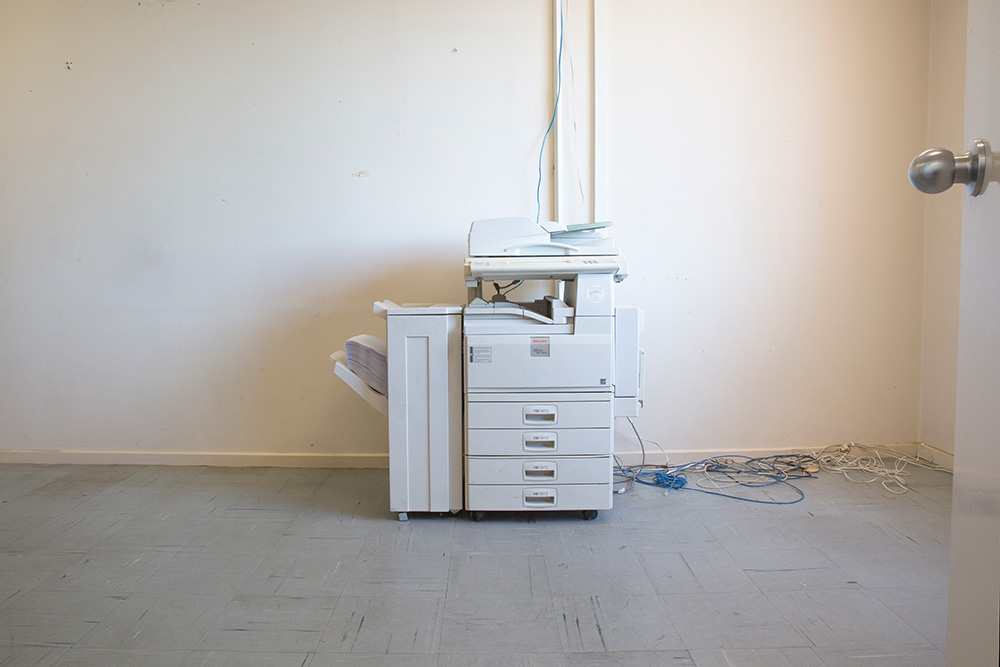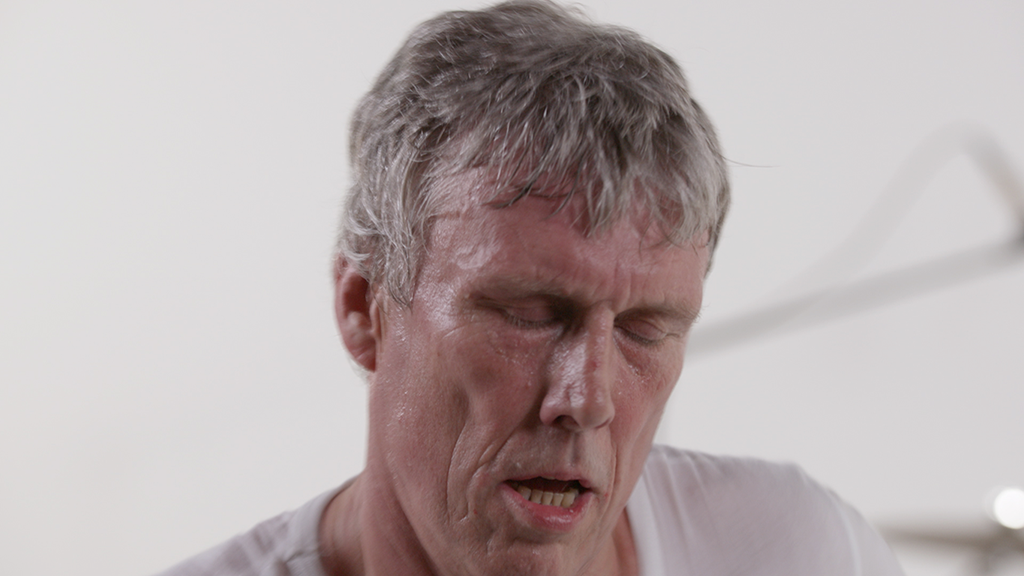
Jamie O'Connell, 'Love Saves the Day', 2020. HD video, sequenced with kinetic light show and audio composition, modified gallery lighting. 11:49min. Neon Parc, City & Neon Parc, Brunswick. Video still
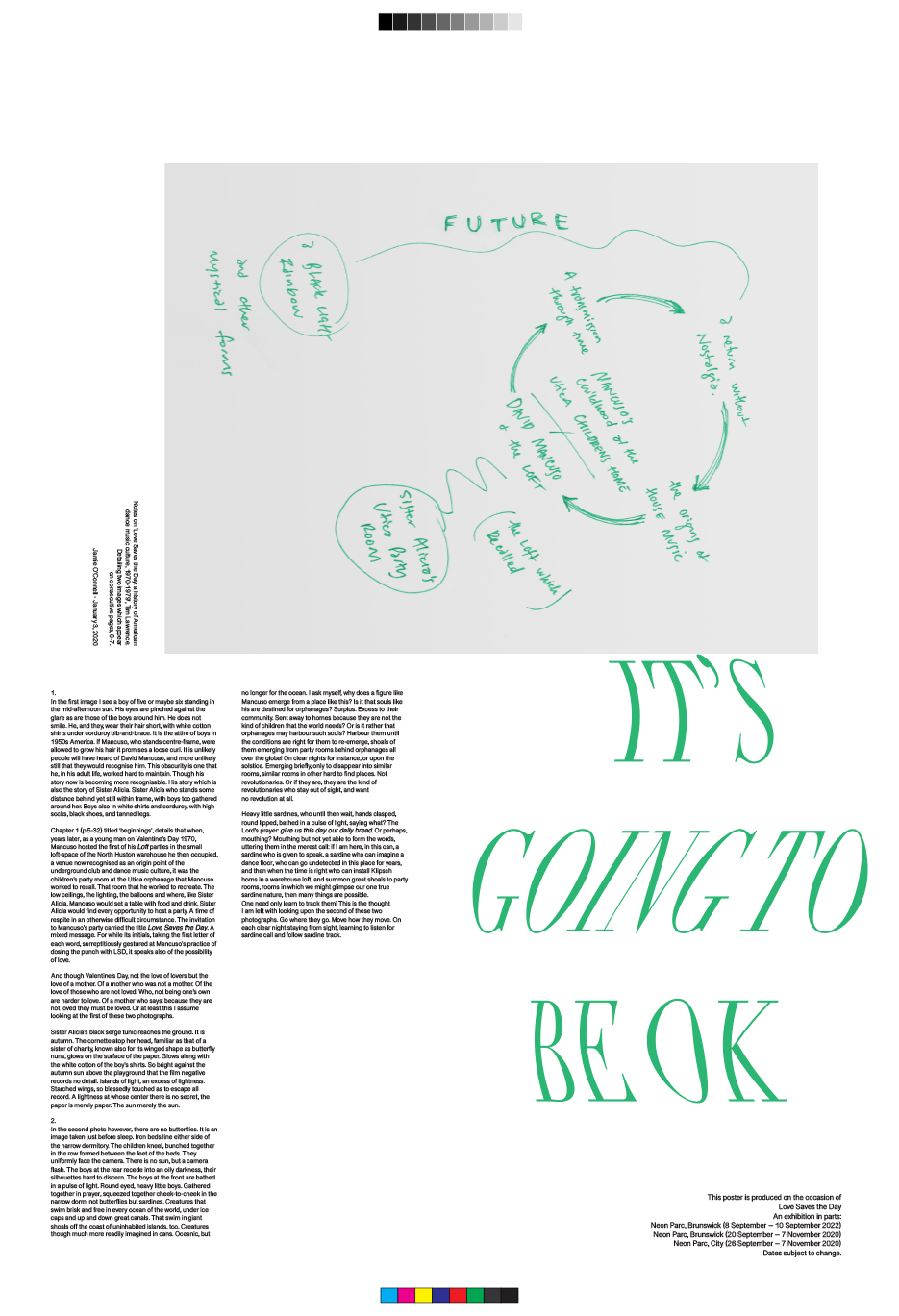
Jamie O'Connell, 'Love Saves the Day', 2020. Poster Multiple, sides A & B. Neon Parc, City & Neon Parc, Brunswick

Jamie O'Connell, Enjoy all Monsters, 2020, Hand shaped Florescent and UV lights, 135 x 87 cm.
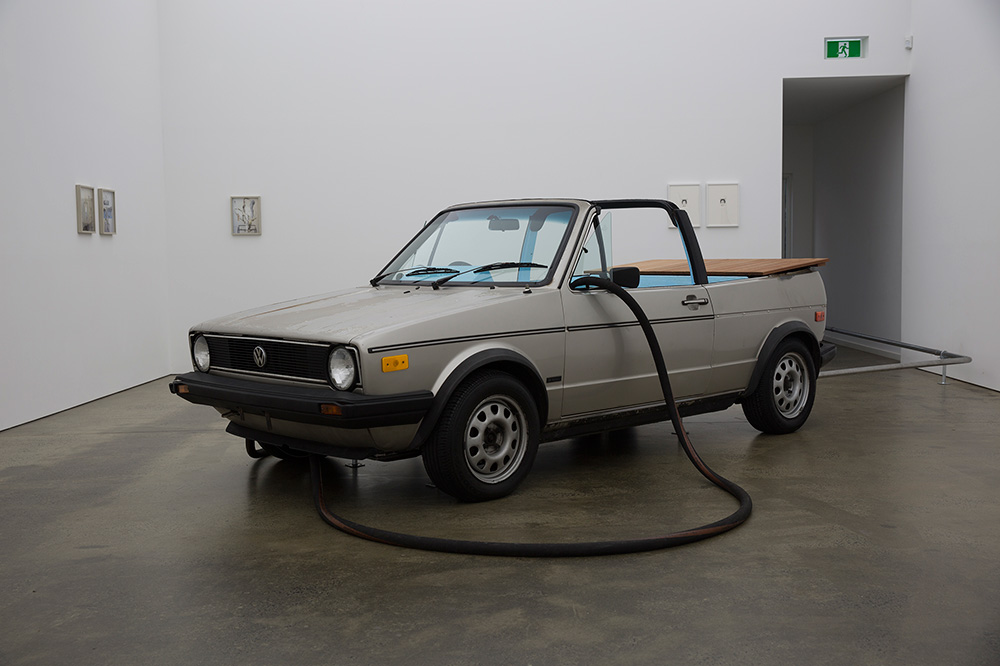
Jamie O'Connell, Car Spa, 2014 & 2017, 1985 VW Golf Mk1, Cabriolet Convertible. VW belt-drive water pump, assisted by Davies Craig 115 L/min EWP—no radiator, custom spa tub interior.
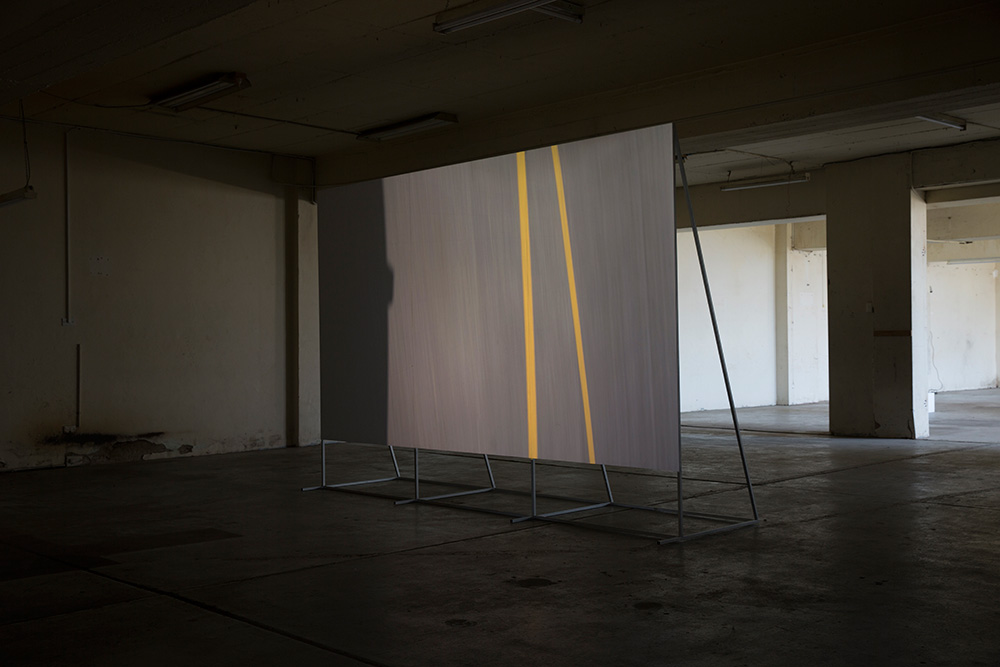
Jamie O'Connell, More Day, 2016. Single take HD video projection 3:15min (continuous loop), sequenced automatic roller blind, framed diagram and trifold leaflets, set of 10 flip books. Neon Parc Project Space, Melbourne. Installation view
Exhibited first at Melbourne's Gertrude Contemporary in Janurary of 2016. The title references a motivational coffee mug bearing the slogan ‘Remember you have the same amount of hours in a day as Beyonce.’ A suggestion that we are all Beyonce, only not yet! You just have to work 24 hours a day, by drinking coffee.
More
Less
Jamie O'Connell, Meteor-rite-meteor, 2015 (video excerpt). Meteorite fragment dragged behind a truck. Silent SD video, 5:53 continuous loop.
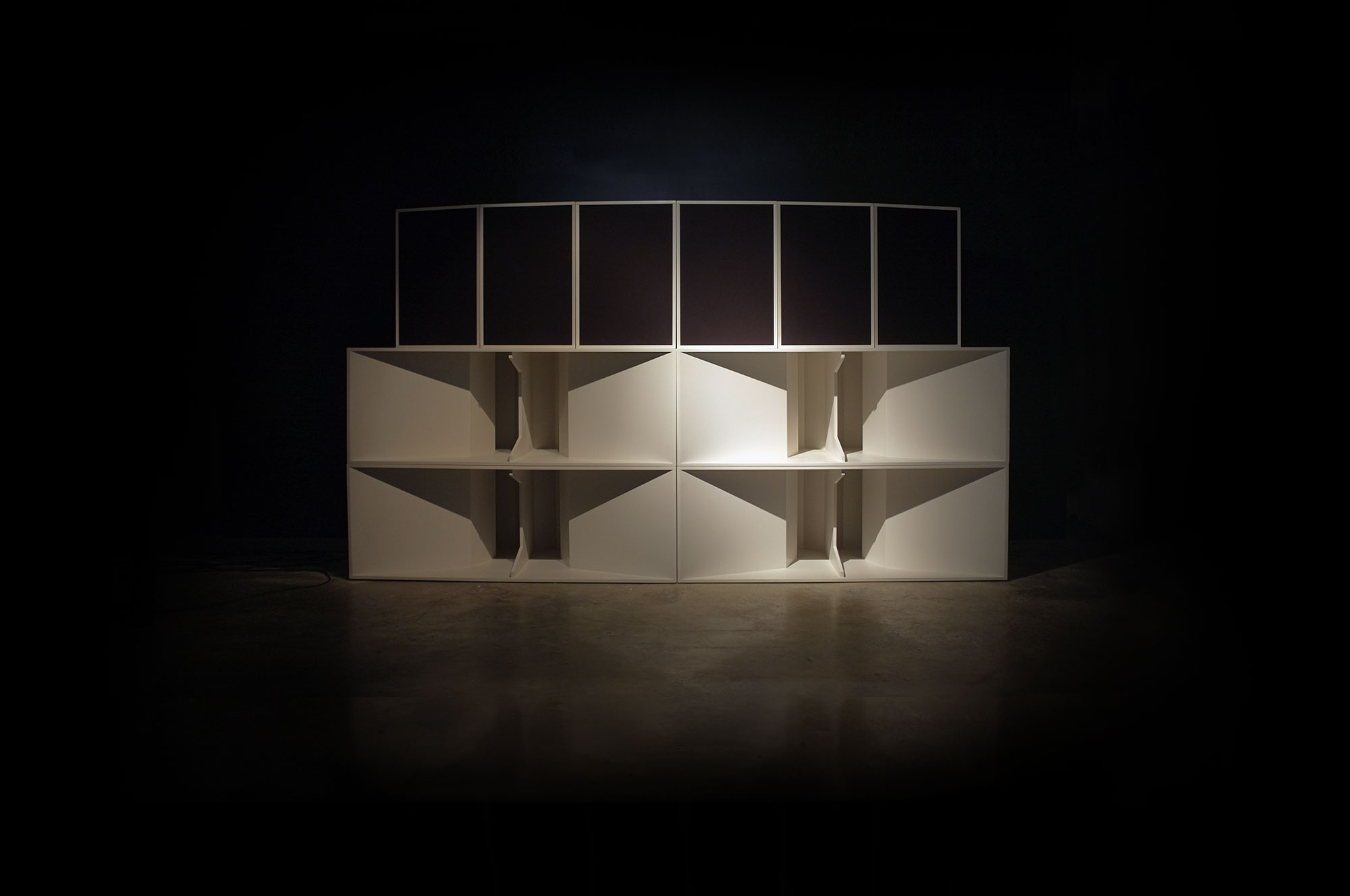
Jamie O'Connell, 3AM Eternal, 2014, sound system, custom program, dancefloor. A system built to chase house music around the globe streaming live sets from a constant 3am on earth (homage to The KLF)
Monitoring every Elvis auction ending, all the time - sourced from online auction sites world wide: a constant cascade, punctuated in intervals of approximately 10 to 15 seconds. Each time the work is exhibited it is loaded with 159kgs of paper, Elvis’s body weight when he died, and these printouts are bound into a volume, and each volume numbered and dated. Printed on A3 paper, 159kg gives each book a human scale, standing at around 1.6 meters tall. The book covers are a fabric weave, which has been colour matched to Elvis’s hair dye: Miss Clair.ol 51D - Elvis’s natural hair colour was a sandy blonde.
More
Less

Selected Texts:
Jamie O’Connell: 23-Hour Party Person
Rex Butler, Art Collector Magazine, issue 92. April-June 2020
Link Here
Writing and Concepts 2017
6:00 pm, Thursday 19 October @ the Ian Potter Centre: NGV Australia
Federation Square, Flinders St, Melbourne.
Link Here
Against Gravity: Jamie O'Connell
Rex Butler,
Art Collector Magazine, issue 76. April-June 2016
Read Here
Close
Download essay as pdf
Jamie O'Connell – CV
Represented by Neon Parc, Melbourne AUS
Monash MADA: Current PhD Candidate
Gradutae of Monash MADA: Bachelor of Fine Arts Honours, 2015.
Graduate of Victorian College of the Arts: Bachelor of Fine Arts, 2014.
Represented by Neon Parc Gallery, Melbourne AUS.
Awards and Residencies:
Awarded the 2016 Sainsbury Sculpture Grant (NAVA), Awarded the 2015 Bear Brass Prize, Awarded the 2014 Roger Kemp Memorial Award, as part of the Victorian College of Arts Graduate Exhibition. Awarded a position in the 2014 India Global Atelier funded by Asialink. Recipient of the 2014 Stella Dilger Award. Recipient of the 2013 Australian Centre for the Moving Arts (ACMI) Award, Proud, 2013. Recipient of 2012 Maude Glover Fleay Bursary.
Solo Exhibitions:
2022 - Love Saves the Day (pt.3), Neon Parc Brunswick, Melbourne, VIC.
2020 - Love Saves the Day (pt.1), Neon Parc Brunswick, Melbourne, VIC.
2020 - Love Saves the Day (pt.2), Neon Parc City, Melbourne, VIC.
2018 - Prospect Park, Neon Parc Project Space, Melbourne, VIC.
2016 - More Day, Neon Parc, Melbourne, VIC.
2016 - More Day than Beyonce, Gertrude Contemporary, Melbourne, VIC.
2014 - The Elvis Story, Knights Street Art Space, Melbourne, VIC.
2013 - Rebuilding, George Patton Gallery, Melbourne, VIC.
Selected Group Shows:
2021 - Neon, Hugo Michell Gallery, Adelaide, SA.
2020 - Crushed Bone / Wet Rock, COMA, Sydney NSW.
2017 - 2017 Misshaped Head, Neon Parc Brunswick, Melbourne, VIC.
2017 - 9x5, Margret Lawrence Gallery, Melbourne, VIC.
2017 - Redlands Art Prize, National Art School Gallery, Sydney NSW.
2015 - Graduate Exhibition, Monash Fine Arts Honours, Melbourne VIC.
2015 - Bowie Is: The Stardom and Celebrity of David Bowie, ACMI, Melbourne VIC.
2015 - Art After Machines: Transductions #18, ACMI - Pause Fest, Melbourne VIC.
2014 - Graduate Exhibition, Victorian College of the Arts, Melbourne VIC.
2014 - Majlis Travelling Scholarship, Margret Lawrence Gallery, Melbourne, VIC.
